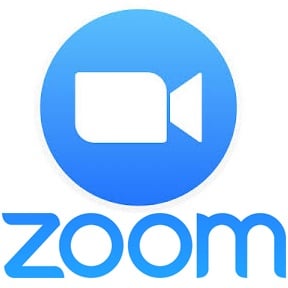Video conferencing has become a way of life for businesses and personal use. It is not just for company team meetings and one-on-ones; grandmothers, book clubs, churches, and just about everyone and every organization now use video to connect.
Zoom has emerged as the leader in the video conferencing industry.
When the stay-at-home orders came in 2020, we all had to learn video conferencing on the fly. Zoom dominates for one major reason.
It's easy to use.
Zoom is available to anyone with a browser. It was the easiest way to connect when teams, families, and other groups were forced to collaborate remotely.
Let’s look at 5 reasons Zoom is one of the best video conferencing platforms out there.
1. Simplicity
In addition to being easy to use out of the box, Zoom has an uncluttered interface that adds to the experience. These include:
- 1-click to join a meeting.
- You can Zoom on any device.
- Sound and video prompts are automatic.
- Chat is integrated into the screen.
- Easy screen sharing.
Read more: How to Successfully Implement New Technology in the Workplace
2. Infrastructure
You do not need to be an IT expert to implement Zoom. The platform can be activated instantly on Zoom’s cloud or deployed on internal servers in 30 minutes onsite using the Zoom Meeting Connector, an extension of Zoom's cloud infrastructure that is used in your internal network.
Zoom also has the best video resolution of any video conferencing platform despite limitations. The free version offers high-definition resolution, and paid accounts offer up to 1080p. The quality of the meeting is also related to the quality of your internet connection.
3. Meeting Features
Zoom’s meeting features to keep it ahead of other platforms. Some of the valuable options include:
- Easy to use virtual backgrounds.
- Emojis that let participants show their reactions without interrupting the meeting.
- Automatic recording for meeting reviews or post-meeting note-taking.
- Breakout rooms that make it easy to switch from large group meetings to smaller sessions.
- Screen sharing by any attendee.
- Whiteboard for on-the-fly diagrams.
- Transcriptions of audio content.
- Closed captioning.
- Breakout rooms.
4. Security
You may remember that in the Zoom boom's early days, anyone with a link could enter a meeting. That feature, intended to make Zoom easy to use, backfired when outsiders joined and disrupted meetings, and the host had no control over their access. Zoom has since added valuable security features to protect users' meetings and data, including:
- A waiting room where the host can see and admit invitees.
- Alerts that a meeting is being recorded so that attendees can opt out if privacy is a concern.
- Your data—including video, audio, and chat—is encrypted end—to—end while it is in transit between your computer and Zoom’s servers.
Hosts can also control access to features and controls, including:
- Screen sharing
- Chat
- Changing screen names
- Require passwords
- Block domains
- Attendee authentication
5. Cost
Zoom’s free version has an impressive list of features. The main drawback is that free meetings are limited to 40 minutes. The free version of Zoom includes:
- Host up to 100 participants.
- Unlimited group meetings for up to 40 minutes.
- Unlimited one-to-one meetings with a 30-hour time limit per meeting.
- Private and group chat.
- Recording (local storage only).
- Screen sharing.
- Whiteboard.
- Virtual backgrounds.
- Breakout rooms.
- Chat for instant messaging.
The biggest reason to upgrade to a paid Zoom account is the unrestricted meeting length (group meetings end abruptly at the 40-minute mark, while one-on-one meetings receive a warning). The next level up is the Pro version (currently $14.99/month), which adds social streaming and cloud recording. Upgrade to the Business version (currently $19.99/month), and you can have up to 500 attendees and meeting transcription, among other features (company branding, custom domains).
While not directly related to the cost of the platform, video conferencing also saves companies time and money by removing the need to meet in person. Whether you are meeting people across town or across the country or the world, you can do so from your office, home, or anywhere that has a solid internet connection.
Related: Zoom vs. Google Meet vs. Microsoft Teams
Zoom is a Productivity Tool
While it may have gone viral due to the pandemic, video conferencing is a new business normal. Yes, businesses will return to offices, and in-person meetings and events will return. But many will think twice about getting in a car or on an airplane to connect for an hour or two. Zoom’s technology keeps getting better. For example, Zoom added a chat app for instant messaging outside of meetings. Integrating instant messaging features means you would not need another app like Slack.
At the end of the day, Zoom is a productivity tool. It helps you get more done quickly by removing geography as a barrier to face-to-face meetings. At the same time, we have seen that Zoom has removed geography as a barrier to jobs, which is enabling a more productive global workforce. Companies can hire across borders and employees have access to jobs thanks to video conferencing, and Zoom is the best.
Become A More Effective Leader
Join executives, entrepreneurs, and industry-leading professionals from around the world who use our research-backed advice and services to become more effective and productive leaders. Download our free guide:
How to Use Delegation to Be a More Impactful Leader
